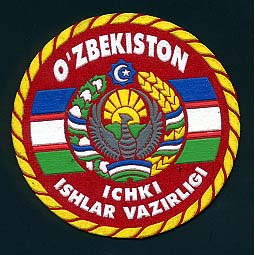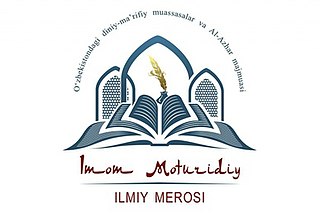
The Armed Forces of the Republic of Uzbekistan, is the name of the unified armed forces of Uzbekistan, consisting of the Ground Force and the Air and Air Defence forces under the defence ministry. Paramilitary units include the National Guard, a Frontier Service and a River Force. It is reported to be the largest, and the strongest in Central Asia. 'The country [has] also began professionalizing its military, an effort that has only limited success and erratic government support. But even in Uzbekistan, these changes represent merely a modest beginning and most of the benefits are concentrated in a few elite, higher readiness formations rather than uniformly applied to the entire force. The Uzbek military is woefully inadequate, but it is far superior to its neighbours.'

This article discusses the administrative-territorial division of the Republic of Uzbekistan. The Article 68 of the constitution of Uzbekistan defines:
The Republic of Uzbekistan shall consist of regions, districts, cities, towns, settlements, kishlaks and auls (villages) in Uzbekistan and the Republic of Karakalpakstan.

Samarqand Region is the most populous region of Uzbekistan. It is located in the center of the country in the basin of the Zarafshan River. It borders Tajikistan, Navoiy Region, Jizzakh Region and Qashqadaryo Region. It covers an area of 16,773 km². The population is estimated to be around 4,031,324, with some 63% living in rural areas (2022).

The following outline is provided as an overview of and topical guide to Uzbekistan:

The Tashkent–Bukhara high-speed rail line is a 600-kilometre (373 mi) high-speed rail connection between Tashkent and Bukhara, two major cities in Uzbekistan. The route passes through six regions: Tashkent, Sirdaryo, Jizzakh, Samarqand, Navoiy, and Bukhara in Uzbekistan. Trains operate seven days a week under the brand name Afrosiyob. The line originally ran from Tashkent to Samarqand, but an extension to Bukhara went into operation on 25 August 2016. Travel from Tashkent to Bukhara, a distance of 600 km (373 mi), now takes 3 hours and 20 minutes instead of 7 hours.

The Ministry of Internal Affairs of the Republic of Uzbekistan, is a body of the Government of Uzbekistan that is charged with the internal affairs of Uzbekistan and oversees the national police. The Ministry of Internal Affairs was founded on 25 August 1991. It replaced the Soviet Interior Ministry. The current Minister of Internal Affairs is Pulat Bobojonov. The ministry holds joint control over the Armed Forces of the Republic of Uzbekistan. It also administers the Academy of the Ministry of Internal Affairs, which is the official educational institution of the ministry.
The Uzbek Ground Forces are the land component of the Armed Forces of the Republic of Uzbekistan. Operating since the collapse of the Soviet Union in 1991, the army is made up of former Soviet Army units that were in the territory of Uzbekistan. As of 2006, it had around 40,000 active personnel. Much of the equipment it uses is also old Soviet material, and the government of Uzbekistan has not given much effort to replace it with modern equipment.

The Ministry of Defense of the Republic of Uzbekistan exercises administrative and operational leadership of the Armed Forces of the Republic of Uzbekistan. The Uzbek Minister of Defense is the nominal head of all the Armed Forces, serving under the President of the Republic of Uzbekistan, who is the Supreme Commander-in-Chief of the Armed Forces of the Republic of Uzbekistan. In this capacity, the minister exercises day-to-day administrative and operational authority over the armed forces. In wartime, the defense minister also serves in an official capacity as the Deputy Supreme Commander-in-Chief of the military. The General Staff, the executive body of the Ministry of Defense, implements the defense minister's operational instructions and orders. The Oliy Majlis exercises legislative authority over the Ministry of Defense through the Government of Uzbekistan, which is nominally responsible for maintaining the armed forces at the appropriate level of readiness.
The National Television and Radio Company of Uzbekistan is the national broadcaster of Uzbekistan, operating four television networks.

The Band of the Ministry of Defense of the Republic of Uzbekistan is the central military band of the Armed Forces of the Republic of Uzbekistan based in Tashkent. It also serves as the organizational and instructional unit of the Uzbek defence ministry, presiding over all 30 military bands in Uzbekistan. It was founded in 1992 from the band of the Turkestan Military District.
The Military ranks of Uzbekistan are the military insignia used by the Armed Forces of the Republic of Uzbekistan.

The National Guard of the Republic of Uzbekistan is a uniformed independent formation within the Armed Forces of the Republic of Uzbekistan. The headquarters of the National Guard is based in Tashkent, where most of the 30,000 soldiers that make up the force are located. As of 2020, the individual in charge of the UNG is currently Rustam Jo'raev. He succeeded Colonel General Bakhodir Tashmatov and Botir Tursunov.
The Academy of the Ministry of Internal Affairs of Uzbekistan, also known as the Tashkent Police School is the main educational institution of the Ministry of Internal Affairs of Uzbekistan. Its purpose is to prepare highly qualified officers for service in the interior ministry and the Armed Forces of the Republic of Uzbekistan.

The Academy of the Armed Forces of Uzbekistan is a body for the training of highly qualified military personnel for the Armed Forces of the Republic of Uzbekistan. It was originally established as an inter-service educational institution that serves the purpose of training officers for higher level leadership positions. Cadets who study at the academy are enrolled for at least 2 years. It was the first institution of its kind to be established on the militaries of Central Asia. The school requires all cadets to be fluent in the Uzbek language as well as have a basic knowledge of Russian.

The Chief of the General Staff of the Ministry of Defense of Uzbekistan is the highest-ranking military officer of in the Armed Forces of the Republic of Uzbekistan, who is responsible for maintaining the operational command of the military and control over three of the five service branches. Unlike the Minister of Defence, the Chief of the General Staff is required to be a commissioned officer who at least holds the rank of colonel (Polkovnik). Another differentiator between the two positions is that the Chief of the General Staff is not political position while the defense minister can be an active member of the political discourse.

The 2020 International Maturidi Conference was an international scientific-practical conference, sponsored by the President of Uzbekistan Shavkat Mirziyoyev, held over three days, from 3 to 5 March 2020, in the city of Samarkand under the title of "Imam Abu Mansur Maturidi and the Teachings of Maturidiyya: The Past and the Present".

The Jizzakh Higher Military Aviation School is the military academy of the Uzbek Air Force, located in the city of Qarshi. It is one of 8 military colleges in Uzbekistan.
The Military Medical Academy of the Armed Forces of Uzbekistan is a specialized educational institution in the Armed Forces of Uzbekistan, under the Education System of the Ministry of Defense in Tashkent. It trains officers of medical services and medical officers of the reserve. The cadets who graduated from the bachelor's degree at the academy are initially awarded the military rank of "lieutenant of medical service" and are issued a diploma in the specialty "military doctor".

The Ministry of Tourism and Cultural heritage of the Republic of Uzbekistan The Ministry of Tourism and Cultural Heritage was established by the Decree of the President of the Republic of Uzbekistan Shavkat Mirziyoyev dated February 18, 2022.

Mirzachorbogh residence is a palace built in Karmana by the emir of Bukhara, 'Abd al-Ahad Khan. It was considered as a summer residence of the last Bukhara emirs. It is located in the northern part of the town of Karmana, near the Zarafshan river, at the intersection of Amir Olimkhan and Mirzachorbogh streets of the Kokhnakurgan neighborhood. It has become a ruin due to neglect and looting. The fact that the state of the palace is dilapidated and neglected has been covered several times in the media and social networks, in response to which the state authorities have made official statements that the restoration of the palace is included in the state plan, but nothing has actually been done.













